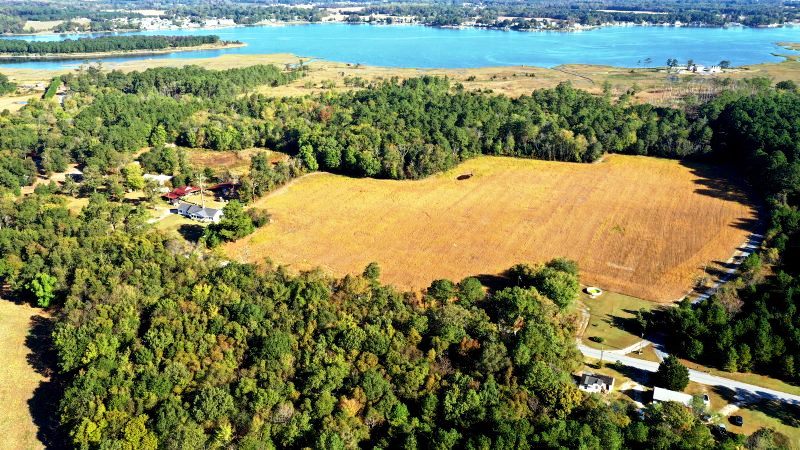On July 16, 2020, the Delaware Center for the Inland Bays partnered with the Delaware Department of Natural Resources and Environmental Control to permanently protect and restore 52 acres of highly-valuable forests and wetlands bordering the Indian River on Piney Neck.
In 2019, the Center identified the parcel of land adjacent to the Piney Point Tract of the Assawoman Wildlife Area as being for sale. Realizing the high conservation value of the ecologically-diverse parcel on the River, the Center worked with DNREC to leverage its funds with those from the Delaware Open Space Program.
In December of 2019, the property was purchased by the Department for inclusion into the Assawoman Wildlife Area owned and managed by the DNREC Division of Fish and Wildlife.
Shortly thereafter in February, DNREC Division of Fish and Wildlife and the Center jointly funded and planted 16,600 tree seedlings to reforest 16 acres of the parcel. The team also purchased and installed 925 tree tubes to protect seedlings from deer damage. This and the benefit of a cool wet spring has made the planting an early success.
“While valuable habitats have been damaged by human activities over time, this latest project represents what can be done when we identify a need, leverage grant support and get to work,” said DNREC Secretary Shawn Garvin. “We have been able to preserve wildlife habitat, restore critical wetland and improve water quality for this Indian River community and for generations to come.”
The reforestation adds to the Indian River’s natural buffer and prevents more than 250 pounds of excess nutrients from polluting the water each year. The project will help to reduce the very high levels of pollution currently entering one of Delaware’s most ecologically and recreationally important waterbodies.
For decades, excess nutrients have caused algal blooms that have killed off the River’s underwater baygrasses and led to dissolved oxygen levels unhealthy for fish and crabs. Restoring forested buffers like the one enhanced through this project is an important tool to provide clean water to the river while conserving wildlife on the land.
The purchase of the property expands the Assawoman Wildlife Area on Piney Point by 11%, while the tree planting will create a larger tract of forest for the benefit of wildlife. Many species of animals need large contiguous blocks of forest for shelter, food, and breeding habitat. However, forests in Sussex County are disappearing rapidly due to development, and those that remain are becoming fragmented into many small pieces.
The reforestation effort will result in an additional six acres of important “interior” forest to support animals like the eastern box turtle and migratory songbirds such as the wood thrush. Since the 1970s, populations of wood thrush have declined by 60% in the eastern United States. The hope is that projects like this will stem these losses and provide more habitat for this once common bird with an unforgettably beautiful song.
“Partnership projects like this greatly benefit the Inland Bays and its communities,” says Chris Bason, the Center’s Executive Director.
“Not only have we together with DNREC protected wildlife habitat and reduced water pollution, we have secured additional outdoor recreation opportunities for a rapidly growing local population,” he concluded.
Photo courtesy of the Delaware Center for the Inland Bays.

